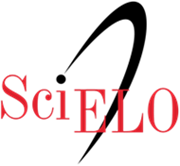Feeding behavior of goat kids fed diets containing peach palm meal
Abstract
The aim in this study was to evaluate the feeding behavior of goat kids fed diets containing peach palm meal replacing corn (0, 10, 40, 60, and 85 % on a dry matter basis). Thirty crossbred Boer kids, with 90 days old and initial body weight of 16.7 ± 3.5 kg were distributed in a completely randomized design with six replicates. Diets were daily supplied ad libitum to allow 10-20 % leftovers. Three collections were performed every 28 days. Diets were isoenergetics and isonitrogenous, composed of corn, soybean meal, peach palm meal, mineral supplement and Tifton 85 hay, with roughage: concentrate ratio of 30:70. There was a linear reduction in the intakes of dry matter (DM) and neutral detergent fiber (NDF) with a respective decrease of 35.7 % and 58.8 % comparing the diet with 85 % replacement and the control diet. The rumination and chewing times increased in diets with peach palm meal. The feeding and rumination rates decreased with reducing intakes of DM and NDF. The peach palm meal affects the feeding behavior and decreases the feed intake in response to palatability, fat and fiber composition, and it is recommended until 10 % replacing corn.
Downloads
References
Amira, C., Louisa, G., Lyas, B., Samir, M., Mohamed, L. A., Morère, L., & Hacène, B. (2014). Effects of secondary compounds from cactus and acacias trees on rumen microbial profile changes performed by Real-Time PCR. International Journal of Advanced Research, 2, 660-671.
Bligh, E. G., & Dyer, W. J. (1959). A rapid method of total lipid extraction and purification. Canadian Journal of Biochemistry and Physiology, 37(8), 911-917. doi: 10.1139/o59-099
Bürger, P. J., Pereira, J. C., Queiroz, A. C., Coelho, J. F., Agostini, P. S., Valadares Filho, S. C., ... Casali, A. D. P. (2000). Comportamento ingestivo em bezerros holandeses alimentados com dietas contendo diferentes níveis de concentrado. Revista Brasileira de Zootecnia, 29(1), 236-242. doi: 10.1590/S1516-35982000000100031
Clement, C. R., Weber, J. C., Van Leeuwen, J., Domian, C. A., Cole, D. M., Lopez, L. A. A., & Argüello, H. (2004). Why extensive research and development did not promote use of peach palm fruit in Latin America. Agroforestry Systems, 61(1-3), 195-206.
Conceição, M. G., Ferreira, M. A., Silva, J. L., Costa, C. T. F., Chagas, J. C. C., & Monteiro, C. C. F. (2018). Can cactus (Opuntia stricta [Haw.] Haw) cladodes plus urea replace wheat bran in steers’ diet? Asian-Australasian Journal of Animal Sciences, 31(10), 1627-1634. doi: 10.5713/ajas.17.0927
Detmann, E., Souza, M., Valadares Filho, S., Queiroz, A., Berchielli, T., Saliba, E., ... Azevedo, J. (2012). Métodos para análise de alimentos. Visconde do Rio Branco, MG: Suprema.
Gómez, G., Vargas, R., & Quesada, S. (1998). Crecimiento y conversión alimenticia de ratas Sprague Dawley sometidas a la ingesta de extractos acuosos de pejibaye (Bactris gasipaes). Agronomía Costarricense, 22, 185-190.
Hall, M. B., Hoover, W. H., Jennings, J. P., & Webster, T. K. M. (1999). A method for partitioning neutral detergent soluble carbohydrates. Journal of the Science of Food and Agriculture, 70(15), 2079-2086. doi: 10.1002/(SICI)1097-0010(199912)79:15<2079::AID-JSFA502>3.0.CO;2-Z
Hill, J. (2007). Impacts of nutritional technology on feeds offered to horses: A review of effects of processing on voluntary intake, digesta characteristics and feed utilisation. Animal Feed Science and Technology, 138(2), 92-117. doi: 10.1016/j.anifeedsci.2007.06.018
Leterme, P., García, M. F., Londoño, A. M., Rojas, M. G., Buldgen, A., & Souffrant, W. B. (2005). Chemical composition and nutritive value of peach palm (Bactris gasipaes Kunth) in rats. Journal of the Science of Food and Agriculture, 85(9), 1505-1512. doi: 10.1002/jsfa.2146
Licitra, G., Hernandez, T. M., & Van Soest, P. J. (1996). Standardization of procedures for nitrogen fractionation of ruminant feeds. Animal Feed Science and Technology, 57(4), 347-358. doi: 10.1016/0377-8401(95)00837-3
Macedo Júnior, G. L., Zanine, A. M., Borges, I., & Pérez, J. R. O. (2007). Qualidade da fibra para a dieta de ruminantes. Ciência Animal, 17(7), 7-17.
Martin, P. R., & Bateson, P. P. G. (1993). Measuring behaviour: an introductory guide (Vol. 1). Cambridge, UK: Cambridge University Press.
Martinele, I., Eifert, E. C., Lana, R. P., Arcuri, P. B., & D‘Agosto, M. (2008). Efeito da monensina e do óleo de soja sobre os protozoários ciliados do rúmen e correlação dos protozoários com parâmetros da fermentação ruminal e digestivos. Revista Brasileira de Zootecnia, 37(6), 1129-1136. doi: 10.1590/S1516-35982008000600025
Mertens, D. R. (2002). Gravimetric determination of amylase-treated neutral detergent fiber in feeds with refluxing in beakers or crucibles: collaborative study. Journal of AOAC International, 85(6), 1217-1240.
Moore, K. J., & Jung, H.-J. G. (2001). Lignin and fiber digestion. Rangeland Ecology & Management/Journal of Range Management Archives, 54(4), 420-430. doi: 10.2307/4003113.
Mora-kopper, S., Mora-Urpi, J. E., & Mata-Segreda, J. F. (1996). Lipolytic activity in meals of pejibaye palm fruit (Bactris gasipaes, Palmae). Revista de biologia tropical, 44(3), 597-599.
Murillo, M., Kroneberg, A., Mata, J. F., Calzada, J. G., & Castro, V. (1983). Estudio preliminar sobre factores inhibidores de enzimas proteolíticas en la harina de pejibaye (Bactris gasipaes). Revista de biologia tropical, 31(2), 227-231. doi: 10. 15517/RBT.V3LI2.24985
Murillo, M. G., Zumbado, M., Cooz, A. E., & Espinoza, A. (1991). Evaluacíon de la harina de pejibaye (Bactris gasipaes) en dietas para pollas de reemplazo durante el periodo de iniciacíon y en gallinas ponedoras al inicio de postura. Agronomía Costarricense, 15(1/2), 135 – 141.
National Research Council [NRC]. (2001). Nutrient Requirements of Dairy Cattle (7th rev. ed.). Washington, DC: National Academy Press.
National Research Council [NRC]. (2007). Nutrient requirements of small ruminants: sheep, goats, cervids, and new world camelids (7th rev. ed.). Washington, DC: National Academy Press.
Pulina, G., Avondo, M., Molle, G., Francesconi, A. H. D., Atzori, A. S., & Cannas, A. (2013). Models for estimating feed intake in small ruminants. Revista Brasileira de Zootecnia, 42(9), 675-690. doi: 10.1590/S1516-35982013000900010
Rombola, L. G., Silva Sobrinho, A. G., Gonzaga Neto, S., Moro, J. R., Zeola, N. M. B. L., & Marques, C. A. T. (2010). Subprodutos da industrialização do palmito pupunha (Bactris gasipaes HBK) na alimentação de ovinos deslanados. Agropecuária Científica no Semiárido, 6(1), 19-26. doi: 10.30969/acsa.v6i1.58
Santos, A. B., Pereira, M. L. A., Silva, H. G. O., Carvalho, G. G. P., Pereira, T. C. J., Ribeiro, L. S. O., ... Sousa, L. B. (2016a). Intake, digestibility and performance of lambs fed diets containing peach palm meal. Tropical Animal Health and Production, 48(3), 509-515. doi: 10.1007/s11250-015-0982-5
Santos, A. B., Pereira, M. L. A., Silva, H. G. O., Pereira, T. C. J., Ribeiro, L. S. O., Azevêdo, J. A. G., ... Ferreira, F. A. (2016b). Feeding behavior of lambs fed diets containing peach palm meal. Semina: Ciências Agrárias, 37(3), 1629-1641. doi: 10.5433/1679-0359.2016v37n3p1629
Statistical Analysis Software [SAS]. (2004). SAS/STAT User guide, Version 9.1.2. Cary, NC: SAS Institute Inc.
Syperreck, M. A., Mizubuti, I. Y., Sales Pereira, E., Ribeiro, E. L. A., Peixoto, E. L. T., Pimentel, P. G., ... Parra, A. R. P. (2016). Feeding behavior in lambs fed diets containing crambe cake. Semina: Ciências Agrárias, 37(4), 2633-2640. doi: 10.5433/1679-0359.2016v37n4Supl1p2633
Van Soest, P. J. (1994). Nutritional ecology of the ruminant (Vol. 1). Ithaca, NY: Cornell University Press.
Weiss, W. P., Conrad, H. R., & Pierre, N. R. S. (1992). A theoretically-based model for predicting total digestible nutrient values of forages and concentrates. Animal Feed Science and Technology, 39(1-2), 95-110. doi: 10.1016/0377-8401(92)90034-4
DECLARATION OF ORIGINALITY AND COPYRIGHTS
- I Declare that current article is original and has not been submitted for publication, in part or in whole, to any other national or international journal.
The copyrights belong exclusively to the authors. Published content is licensed under Creative Commons Attribution 4.0 (CC BY 4.0) guidelines, which allows sharing (copy and distribution of the material in any medium or format) and adaptation (remix, transform, and build upon the material) for any purpose, even commercially, under the terms of attribution.
Read this link for further information on how to use CC BY 4.0 properly.








































